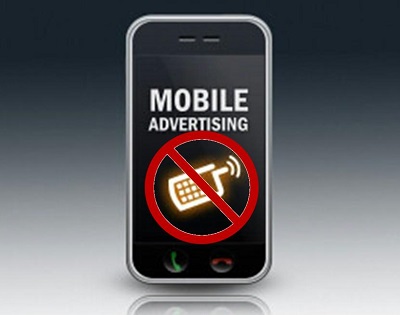As ad blocking apps become more popular, marketers are working on more appealing alternatives.
As ad blocking apps have suddenly exploded in popularity – particularly now that they have been permitted on iPhones and other iOS devices – mobile marketing firms have found themselves taking a cold hard look at the techniques that they have been using to reach consumers, and what they can do to overcome being potentially blocked.
Advertisers are finding themselves experimenting with different ways to reach customers over smartphones.
A growing belief is that mobile marketing companies will need to start looking for new, relevant, context-driven techniques to connect with consumers in a way that is appealing enough that they will not want to take measures to block them off. Two areas that many feel will be grabbing a great deal of focus will be in-app advertising and branded content. While it is too early to tell precisely what the top methods will be, these are some of the main guesses, so far.
At this point, it has not yet reached the point in which mobile marketing budgets are being slashed back.
 So far, ad blocking apps haven’t had enough of an impact to stop industry execs from wanting to spend over this channel. That said, there is still a risk that a reduction in mobile web ad inventory could occur as publishers and advertisers gauge the impact of ad blockers and attempt to find other methods of reaching consumers in which they are less likely to be blocked.
So far, ad blocking apps haven’t had enough of an impact to stop industry execs from wanting to spend over this channel. That said, there is still a risk that a reduction in mobile web ad inventory could occur as publishers and advertisers gauge the impact of ad blockers and attempt to find other methods of reaching consumers in which they are less likely to be blocked.
According to A.T. Kerney media and technology practice partner, Greg Portell, “Budgets will continue to shift to mobile as they catch up with the shift in eyeballs.” He added that “There should be a period of time with spend in mobile rising regardless of ad tech.” Portell pointed out that there has been some worry expressed over the risks associated with ad blocking software, which will help to drive experimentation to a greater degree than has been the norm until now.
He feels that there will likely be a rise in branded and native sponsored content. He also underscored the importance of providing consumers with relevant communications within an appropriate context, saying that it “transcends ad blocking”
Those advertisements that have become a nuisance to the mobile web may be vital to its existence.
Among the frustrations that are the most common about the mobile web are the ads and automatically playing videos that cause us to have to wait excessive amounts of time for a page to load, but the ad blockers that have been providing relief from that experience may now be threatening the existence of some websites.
The reason is that many free sites depend on the display of advertising for their livelihood, to make them worthwhile.
iPhones and iPads now have the opportunity to be able to use apps that function as ad blockers and millions of mobile device users have chosen to download and install those applications to speed up their experience on the mobile web while avoiding annoying accidental ad clicks. At the same time, websites and publishers often depend heavily on advertising revenue in order to make their very existence worthwhile, as the ads pay for the amount of time that is put into maintaining them.
This has some sites watching the rise of ad blockers with bitten-down nails as their primary income is threatened.
 Advertising revenue is vital to companies ranging from tiny to giant such as Google, The New York Times, and Hulu. While panic has yet to set in for the majority of websites, they certainly have their eye on this trend and some websites are already working hard to be able to reduce any annoyance that their ads may be causing so that their regular users won’t be driven to ad blocking altogether.
Advertising revenue is vital to companies ranging from tiny to giant such as Google, The New York Times, and Hulu. While panic has yet to set in for the majority of websites, they certainly have their eye on this trend and some websites are already working hard to be able to reduce any annoyance that their ads may be causing so that their regular users won’t be driven to ad blocking altogether.
According to the Harvard University director of the Nieman Journalism Lab, Joshua Benton, “It is possible to be too alarmist about ad blockers, but it’s a very real phenomenon.” It all depends on the proportion of mobile device users who opt to install these apps. He explained that there will be a very big difference between having 5 percent or 80 percent of iPhone users installing these mobile apps.
He cautioned that if advertising practices become too annoying, it could lead consumers to take action through ad blockers in order to make them disappear, going the way of the pop-up window (a technique that is automatically blocked by many browsers due to user frustration).
 So far, ad blocking apps haven’t had enough of an impact to stop industry execs from wanting to spend over this channel. That said, there is still a risk that a reduction in mobile web ad inventory could occur as publishers and advertisers gauge the impact of ad blockers and attempt to find other methods of reaching consumers in which they are less likely to be blocked.
So far, ad blocking apps haven’t had enough of an impact to stop industry execs from wanting to spend over this channel. That said, there is still a risk that a reduction in mobile web ad inventory could occur as publishers and advertisers gauge the impact of ad blockers and attempt to find other methods of reaching consumers in which they are less likely to be blocked.
 Advertising revenue is vital to companies ranging from tiny to giant such as Google, The New York Times, and Hulu. While panic has yet to set in for the majority of websites, they certainly have their eye on this trend and some websites are already working hard to be able to reduce any annoyance that their ads may be causing so that their regular users won’t be driven to ad blocking altogether.
Advertising revenue is vital to companies ranging from tiny to giant such as Google, The New York Times, and Hulu. While panic has yet to set in for the majority of websites, they certainly have their eye on this trend and some websites are already working hard to be able to reduce any annoyance that their ads may be causing so that their regular users won’t be driven to ad blocking altogether.